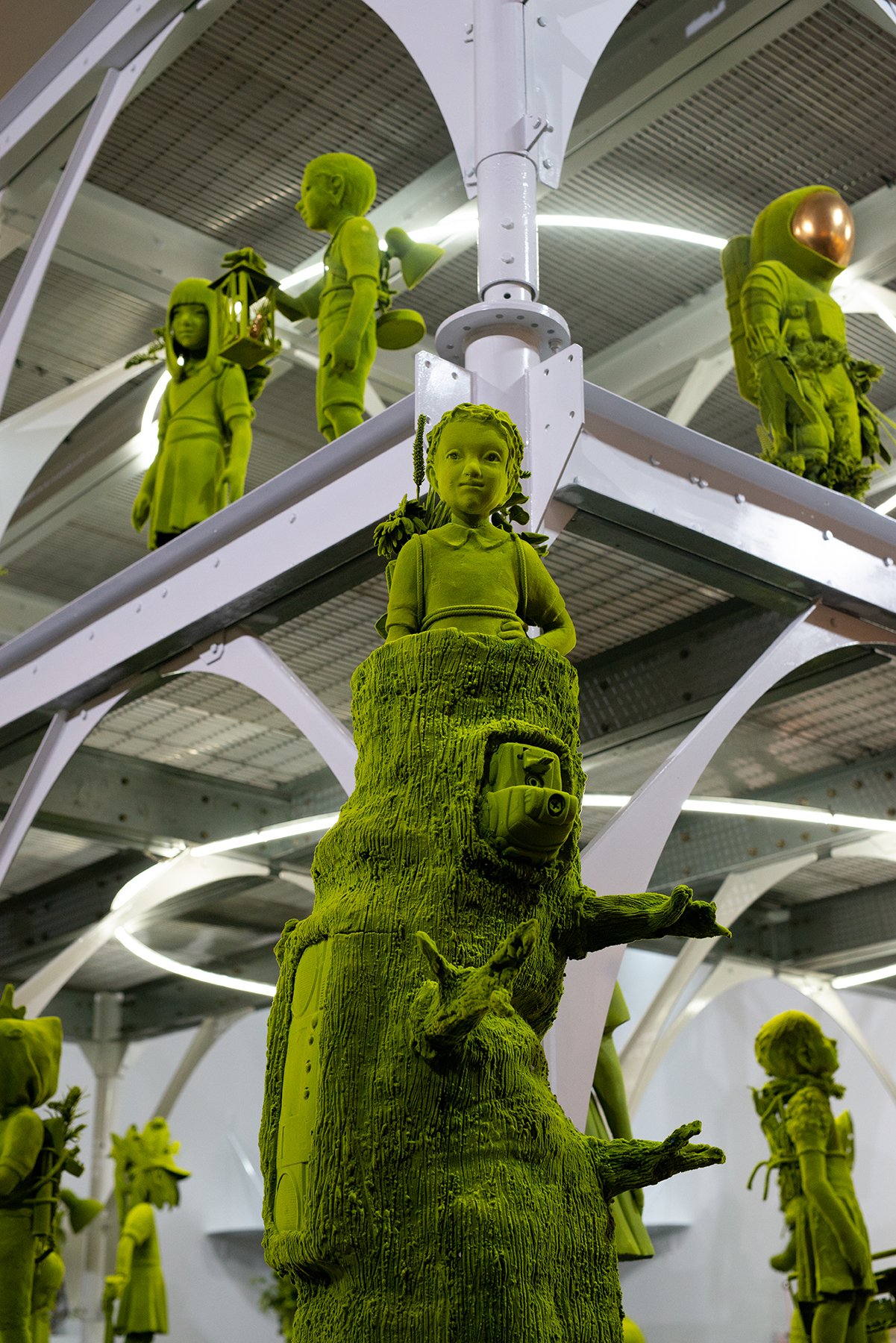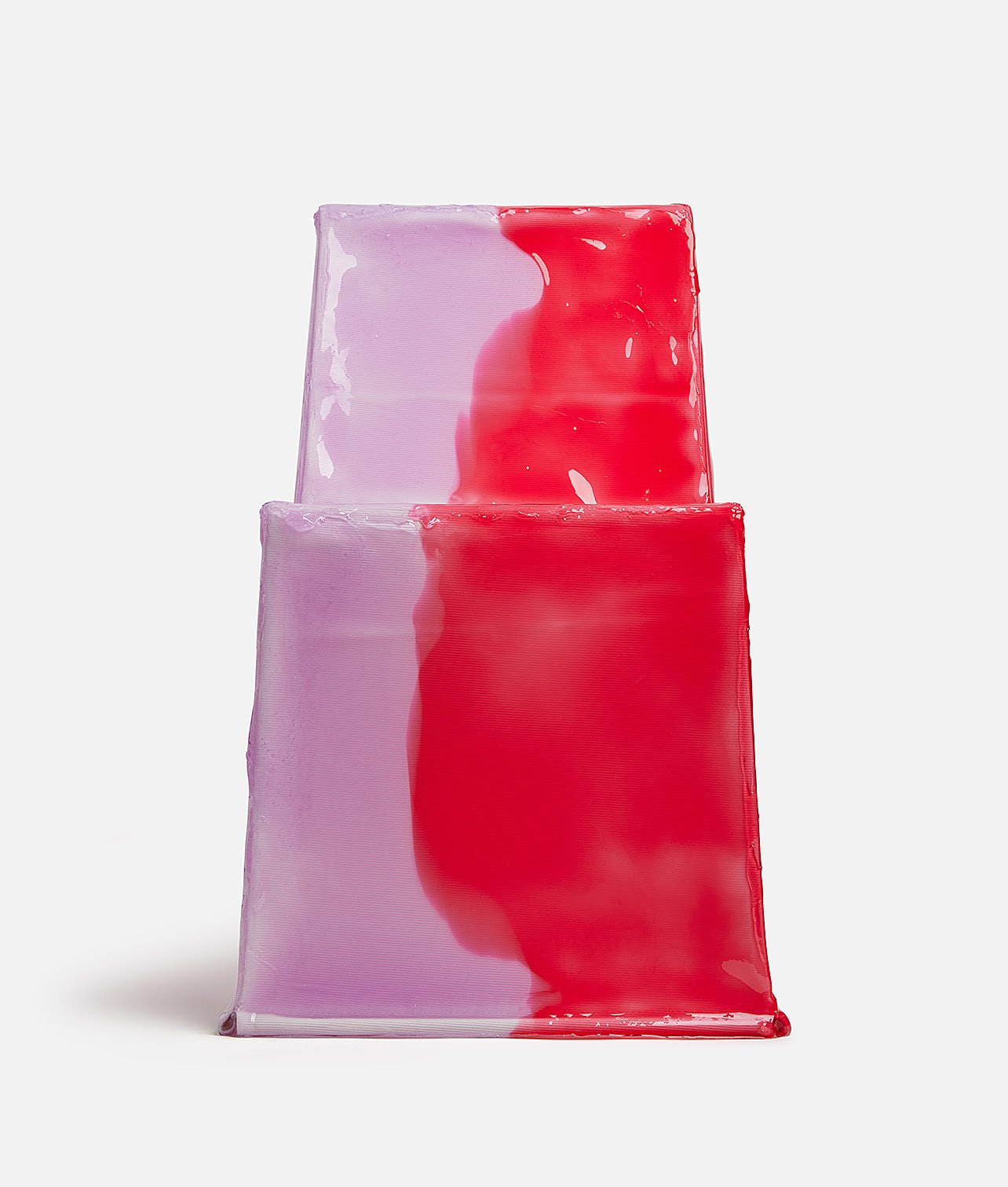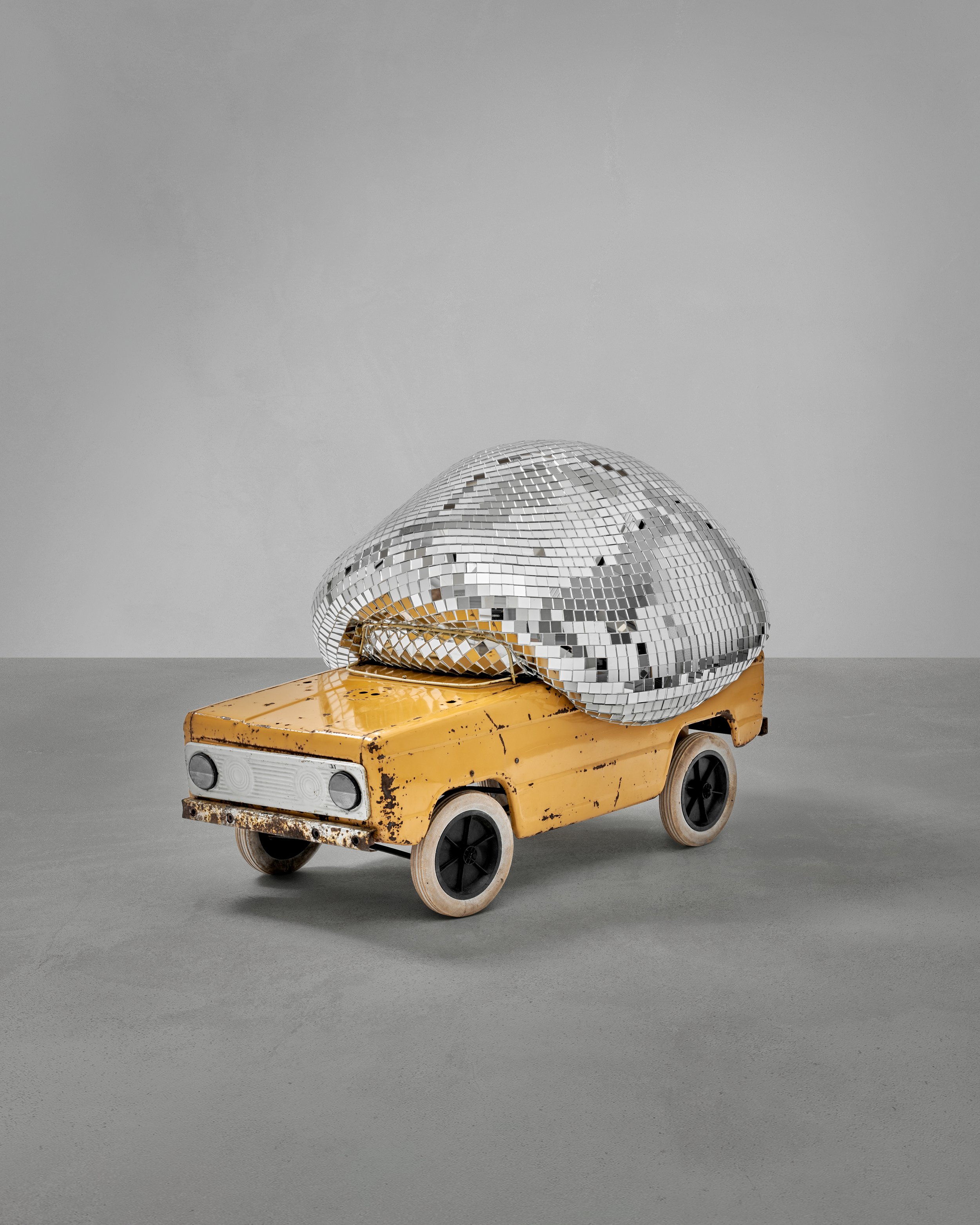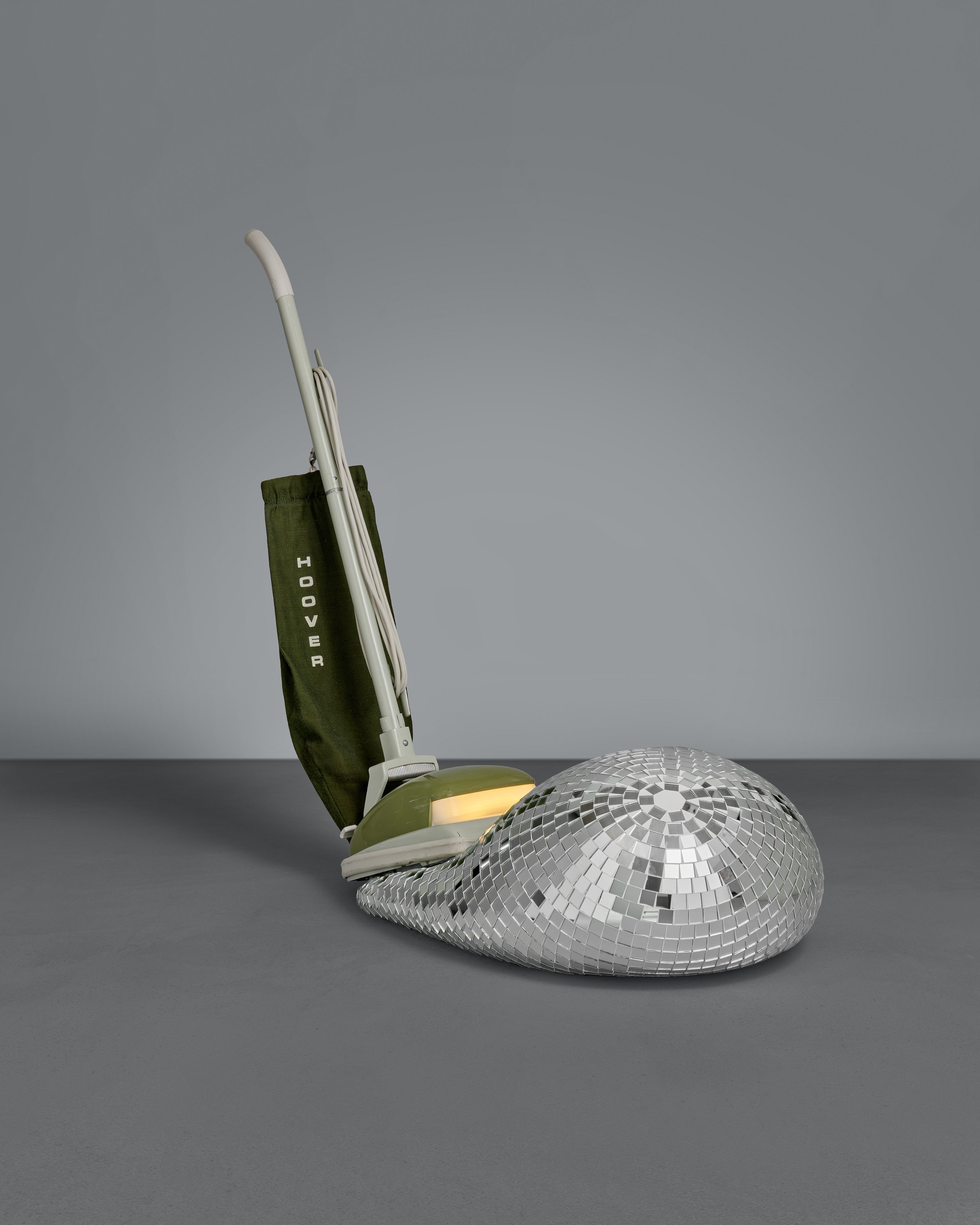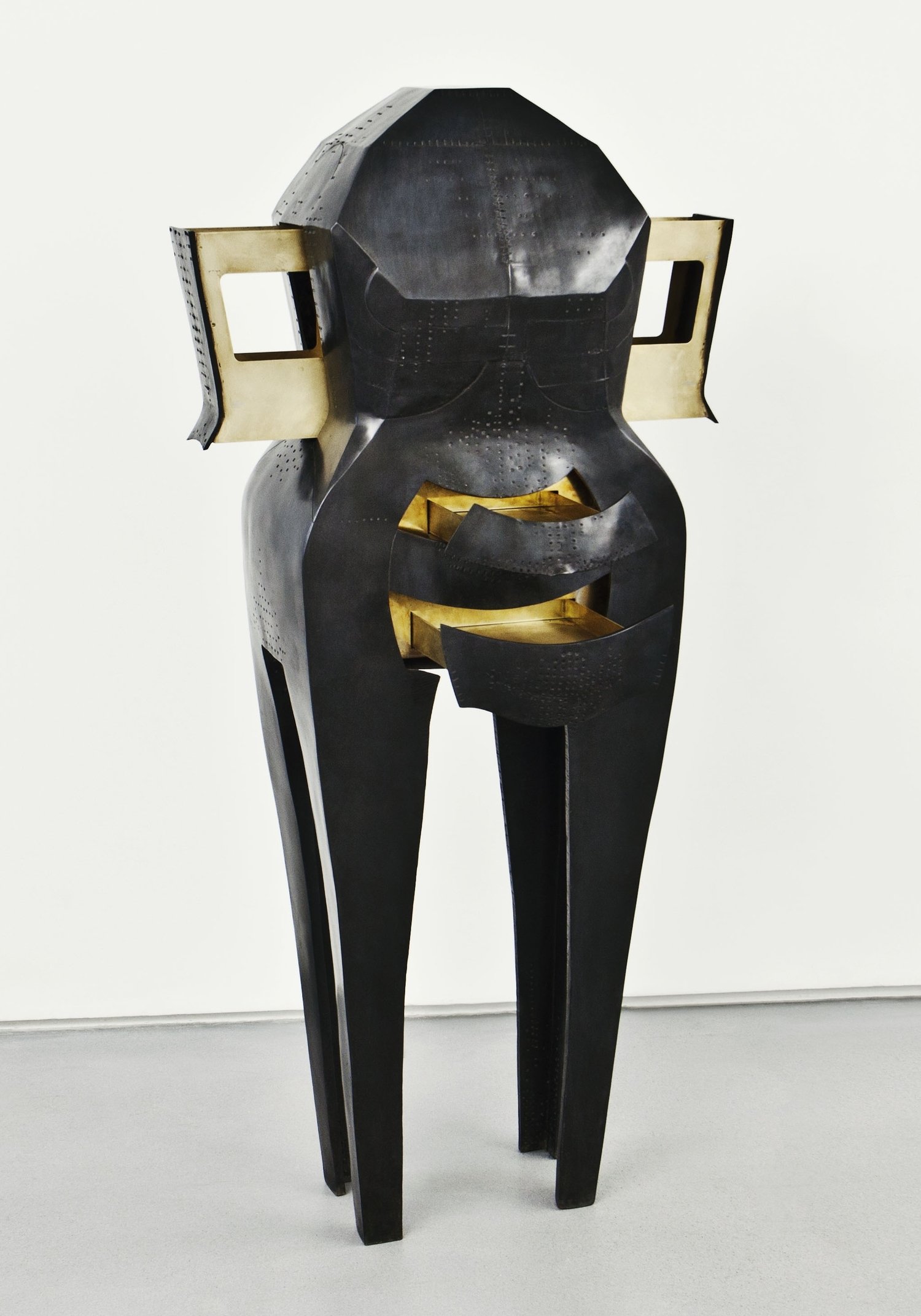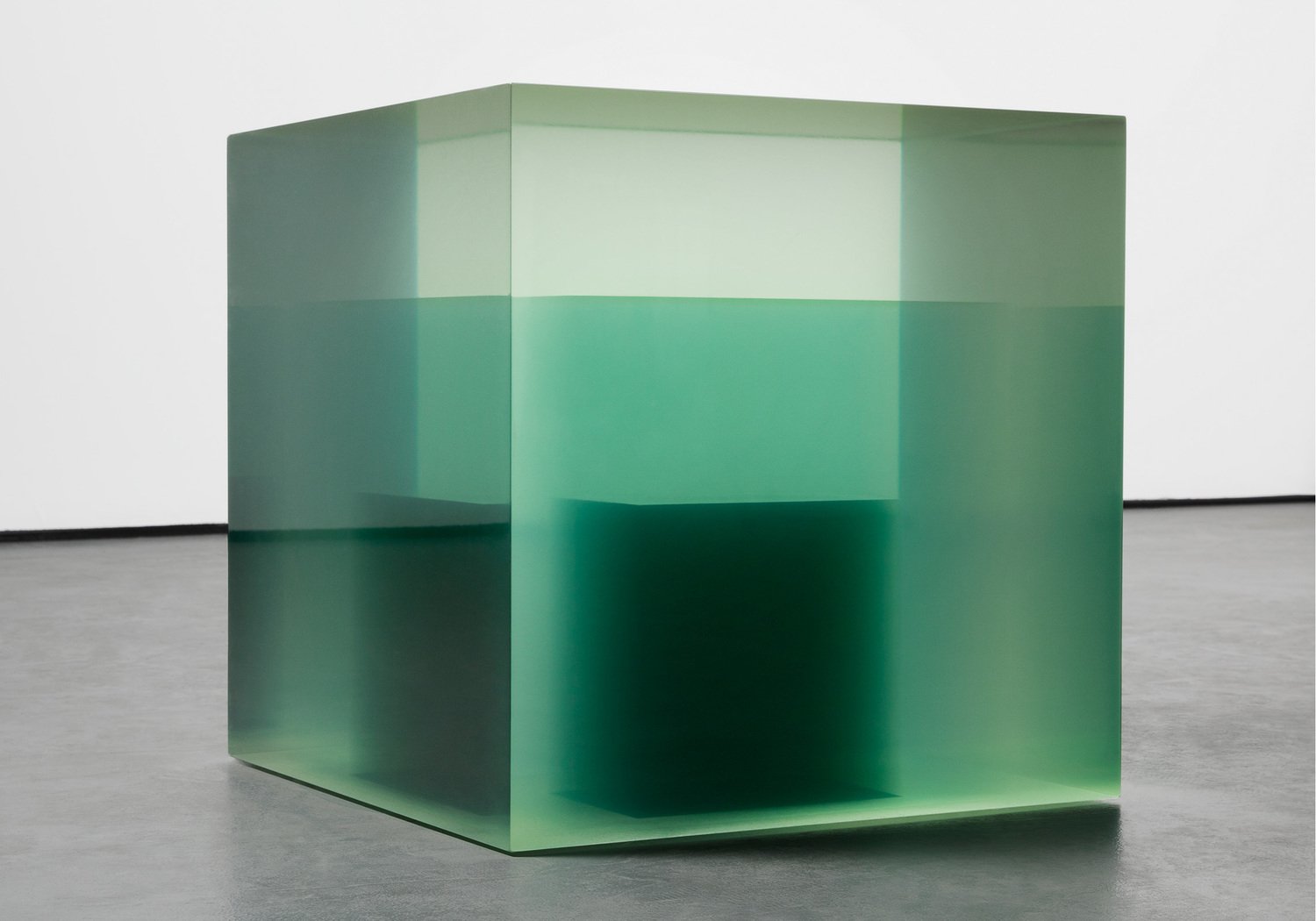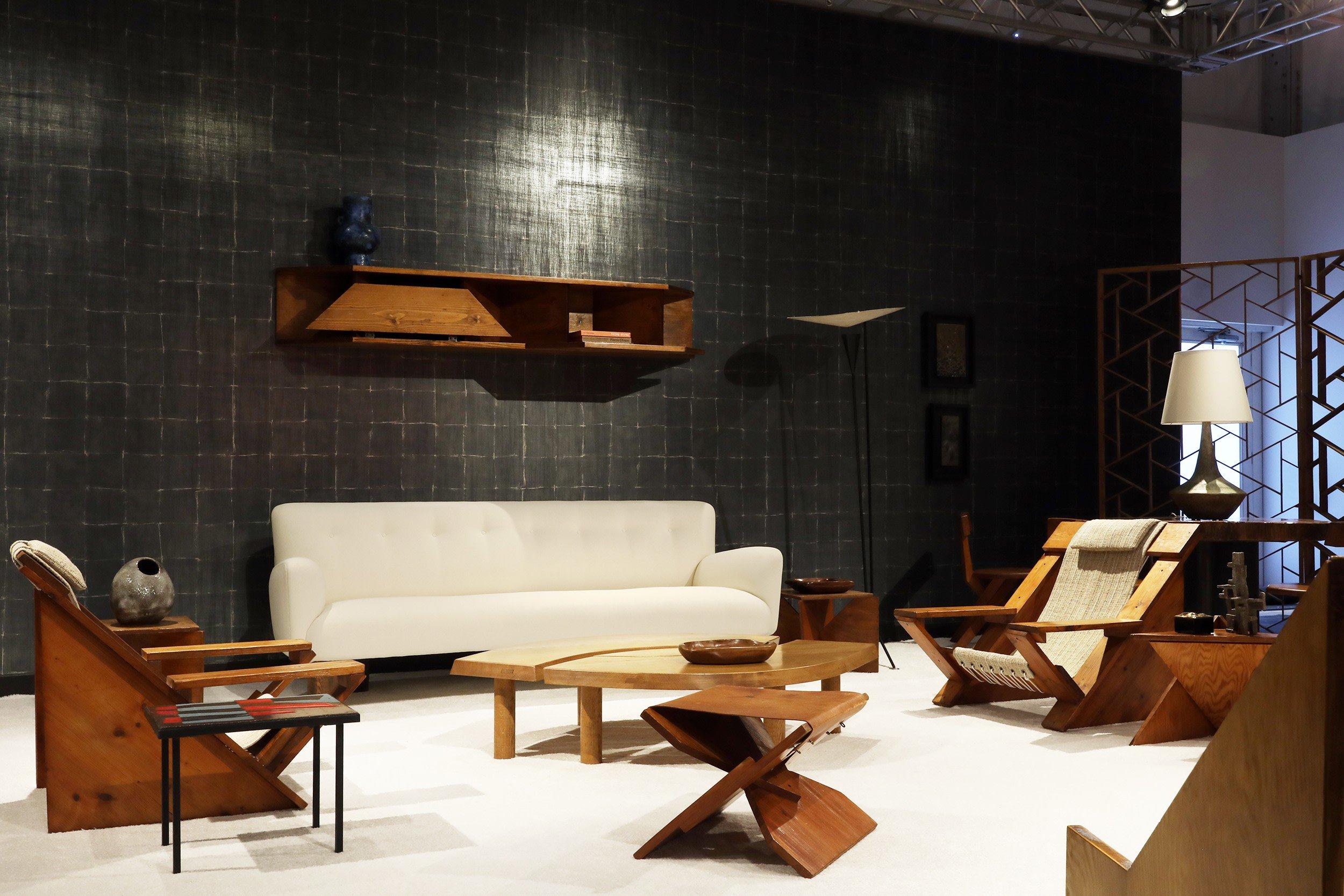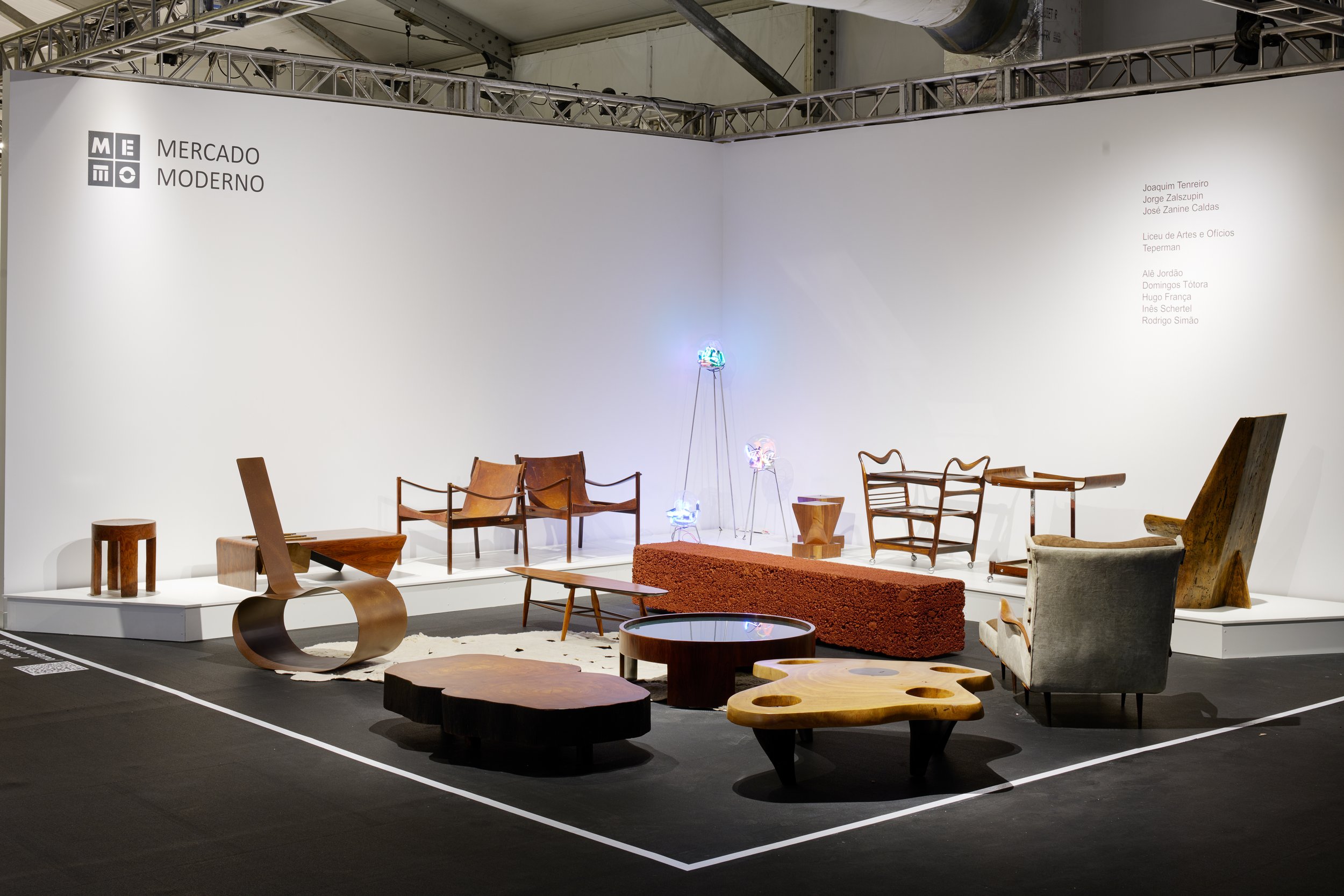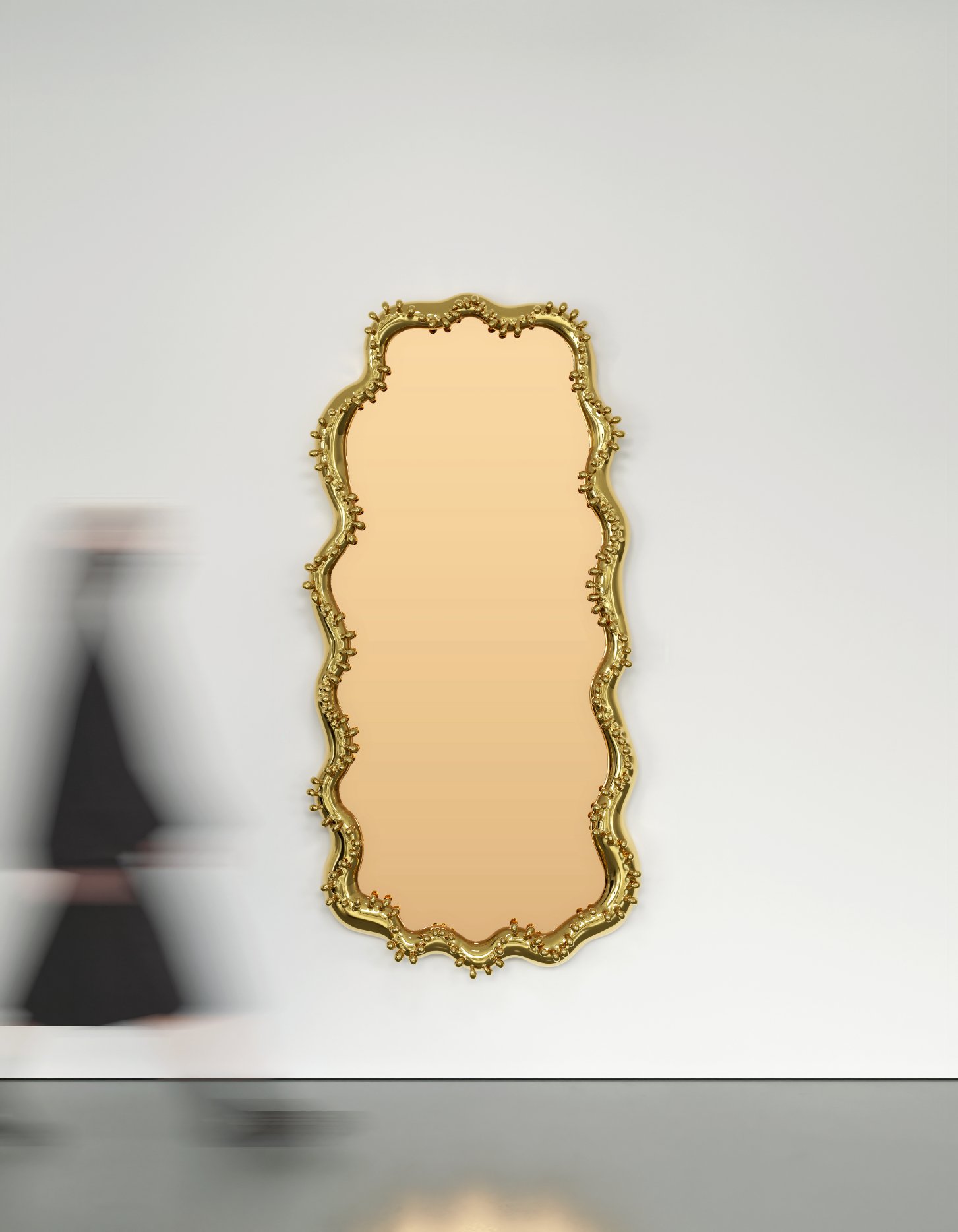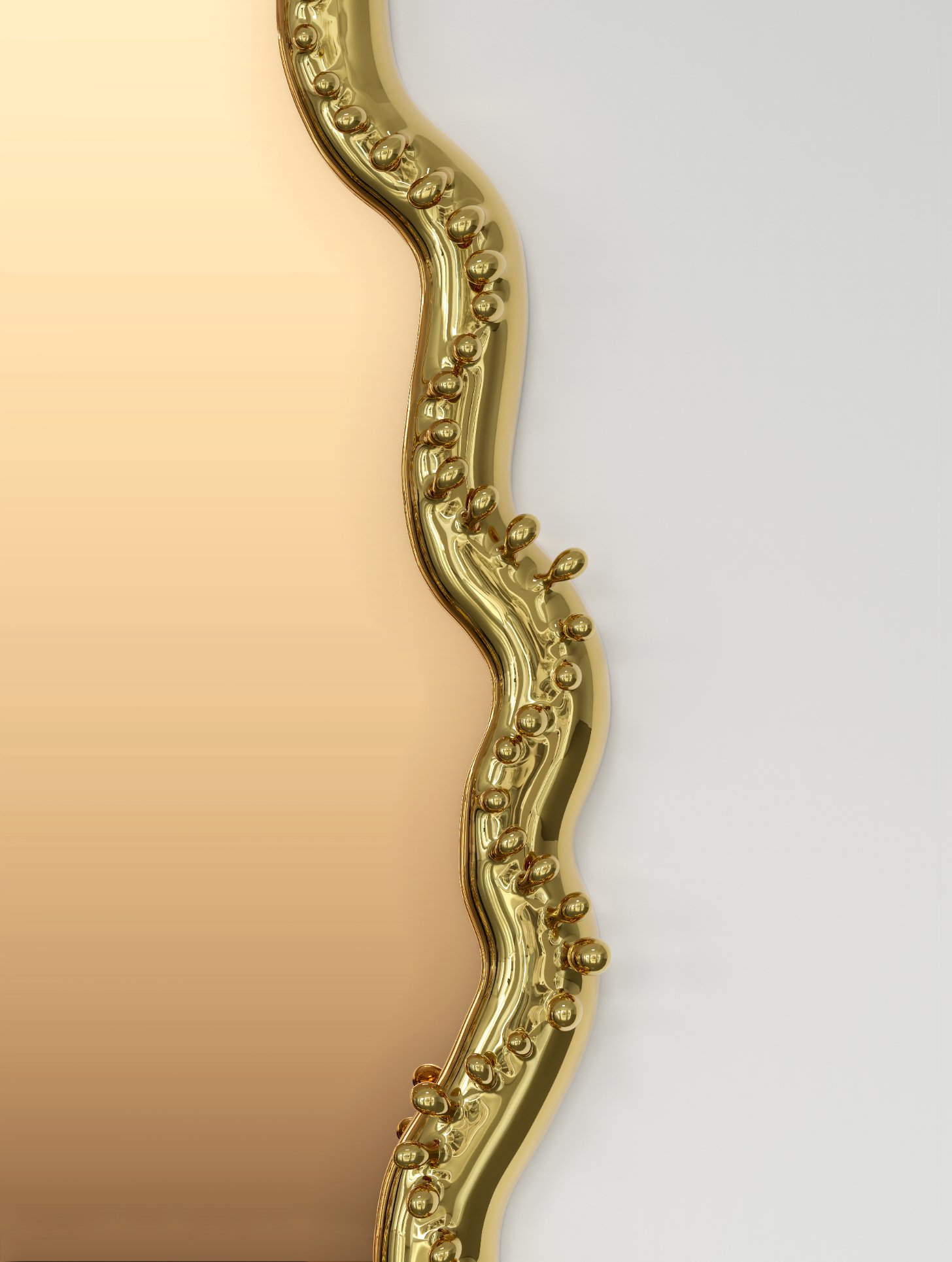Rotganzen
Quelle Basket, Miami Edition, 2022
Vintage Basketball Hoop, Quelle Fête
Mirror object: glass mirror, foam, grout, glue
Basket hoop: metal ring with fabric netting
62 x 69 x 80 cm
Edition of 12
text by Jennifer Piejko
There isn’t much time to sit down, considering all the seating options. For the eighteenth year in a row, Design Miami has set up next to the Miami Convention Center during Art Basel Miami Beach, bringing galleries, presentations, and talks to Pride Park.
The fair’s curatorial director, Maria Cristina Didero, leads a program with the theme “The Golden Age: Looking to the Future,” which celebrates “a tomorrow of our own creation.” Looks like tomorrow can go many ways, including enthusiasm, or, if not, at least surrender to amusement: there are Gaetano Pesce and Matthieu Blazy’s lustrous dripped resin chairs for Bottega Veneta sitting in a prismatic half-circle, offering gleeful, freeform optimism (and one of them even a cheeky smile); Finnish designer Kim Simonsson’s mossy children and miniature astronauts occupying levels of an industrial metal scaffolding installation by Urban Umbrella at New York’s Jason Jacques Gallery; Amsterdam’s Rademakers gallery’s room of deflated, dripping, gluttonous disco balls by the collective Rotganzen.
Lots of designs for tomorrow incorporate historical elements into their design as well: the collection of Brazilian modernist pieces including work by Joaquim Tenreiro, Jorge Zalszupin, and José Zanine Caldas at Rio de Janeiro’s Mercado Moderno; sensual, weathered wood and stone by Natasha Dakhli and Giancarlo Valle at New York’s Magen H Gallery; warm bronze seating by Ingrid Donat, monumental Rick Owens chairs, and radiant, alien translucent cubes by Niko Koronis, shown by Carpenter’s Workshop Gallery; Maestro Dobel Tequila constructed their “Artpothecary” in the center of the fair, offering a pink crossroads of sorts in the installation The Mexican Golden Age by Mexico City-based design studio Clásicos Mexicanos, as well as their new Latinx Art Prize with El Museo del Barrio in New York, awarded for the first time next fall.
A number of booths also took this year’s theme as a prompt for starting tomorrow at the beginning—looking backward. New York’s Bernard Goldberg Fine Arts had a booth of historical works, many of them screens and dividers, including Nicola D’Ascenzo’s freestanding stained-glass wall. The geometric Art Deco florals of The Chestnut Street Window (c. 1925) was made for the Philadelphia luncheonette Horn & Hardart, the coffee and sandwich dispensary that revolutionized “fast food.” Samuel Yellin’s Gates (1912–15), ornate black wrought-iron gates from a grand private residence, rest on a nearby wall; so do 1920s and ’30s fire screens by William Hunt Diederich and Adalbert Szabo, the latter made for the transatlantic ocean liner S.S. Normandie.
The Future Perfect’s presentation at Design Miami/ 2022, Booth G09.
Photo: Joseph Kramm. Courtesy the artists and The Future Perfect.
As with so many art and design fairs, there are a fair number of mirrored works, providing lots of selfie opportunities. One of the most popular, the squiggly, tentacled gold wall mirrors shown by the Haas Brothers’ Gallery All, literally framed rose-colored glass. The simple change to the standard mirror gave passersby a chance to sneak in a little self-flattery and self-reflection, the little boost that it takes to keep moving on a long day.


